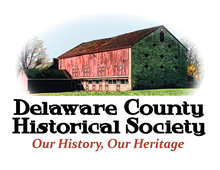Jug Day as much about history, community as harness racing

By Dean Narciso The Columbus Dispatch – Sep 16, 2019

DELAWARE — To truly understand the lore of the Little Brown Jug, you should listen to the old-timers, those who were there at the beginning.
Their stories, passed through generations, are the foundation of the sport, dating to when the horse and buggy were the primary mode of transportation. Terms such as bridle, girth, crupper and sulky were as common in those days as all-wheel-drive, turbocharged and extended cab are today.
About 80 people attended a presentation last week on the history of the Jug, which is the final leg of the Triple Crown of Harness Racing for pacers. Most of those who gathered in the restored Stratford Barn know the difference between pacers and trotters (it’s related to a horse’s gait).
The Little Brown Jug final is Thursday. The Delaware County Fair began Saturday and runs through Saturday.
For legendary race announcer Roger Huston, a native of Xenia in Greene County, the race defines him: “I’ve loved it. I’ve lived for it. When Jug Day is over, I look forward to next year,” he told the audience at Thursday’s event.
Jay Wolf, who has organized media and publicity for the event for three decades, feels the same: “You meet people. There’s class reunions. It’s just family now.”
For the thousands of young families moving into Delaware County’s southern neighborhoods, it might take some time to understand why Delaware City Schools (the Pacers) cancel two days of class beginning on Jug Day, always the third Thursday after Labor Day; why horse motifs adorn bridges and buildings; why a dusty, half-mile track captivates so many. Along with the Hambletonian, a race for trotters, the Jug is among the most coveted races for 3-year-old Standardbred horses.
Dick Leavy, a longtime psychology professor at Ohio Wesleyan University, said the Jug provides “a sense of community, of belonging someplace” that can be preserved through sharing stories.
That’s why he’s organizing the Little Brown Jug Oral History Project, a digital archive, or “story bank,” to enshrine the event’s importance. “Before we lose any more people, we wanted to capture their stories,” Leavy said.
Wolf, the Jug’s unofficial historian, recounted how racing in Delaware, even of dogs, was popular throughout the Industrial Revolution; how Powell, then a village, was the longtime home of the fair; and how the fair moved to the county seat in 1938.
A bond levy was needed to finance a grandstand and buildings on the fairgrounds, which was helped in part by the promise of a swimming pool on the site. “What kid wouldn’t want their parents to vote for that?” he said.
Before the first race, in 1946, a Name the Race contest was held. Little Brown Jug beat out Whetstone, Pioneer, Hurricane and Rainbow, among other finalists, Wolf said.
In its heyday, the Jug had an air of sophistication, drawing men in suits and hats and ladies with parasols, Leavy said.
Unlike modern sports, whose fans might need binoculars to see the action, the Jug allows people to walk up to the riders and touch the horses.
“This is sort of rooting for an event, not a team or a personality,” Leavy said. “So much of it is an element of intimacy for the Jug that is unlike almost any other sporting event.”
For Huston, who turns 77 today and was among the last to leave Thursday’s event after signing copies of his new book, “The Voice: The Unparalleled Life of Roger Huston,” calling the next race, as he has done for almost 60 years, will continue as long as he has breath.
“I’ll never stop doing this,” he said.
